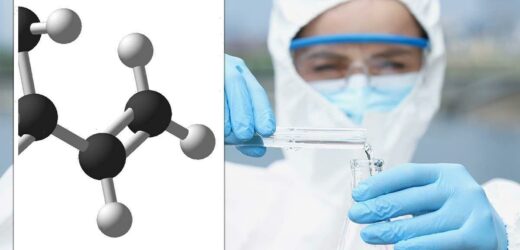Charles hails innovations to help tackle climate change
We use your sign-up to provide content in ways you’ve consented to and to improve our understanding of you. This may include adverts from us and 3rd parties based on our understanding. You can unsubscribe at any time. More info
For the first time, an international team of researchers has discovered hydrotrioxides forming in atmospheric conditions. Scientists have warned that this new class of super reactive gases in the Earth’s atmosphere could affect both human health and global climate. In a study published in the journal Science, the researchers found that through a process known as isoprene oxidation, about 10 million metric tonnes of these gases are formed in the atmosphere every year.
Study senior author Henrik Grum Kjærgaard from the University of Copenhagen said: “This is what we have now accomplished.
“The type of compounds we discovered are unique in their structure. And, because they are extremely oxidising, they most likely bring a host of effects that we have yet to uncover.”
In its simplest form, these “hydrotrioxides” refer to a kind of hydrogen polyoxide bonded with water molecules, which contain two hydrogen atoms and one oxygen atom.
Hydrogen peroxide, which contains two hydrogen and two oxygen atoms (H2O2) is a chemical compound that is commonly used in bleach.


Hydrotrioxides, chemically characterised as ROOOH, contain three oxygen atoms attached to each other, which make them even more reactive than hydrogen peroxide.
The scientists warned that these chemicals were formed when certain widely emitted gases like soprene and dimethyl sulfide decomposed in the atmosphere.
Jing Chen, a PhD candidate and second author of the study, said: “It’s quite significant that we can now show, through direct observation, that these compounds actually form in the atmosphere, that they are surprisingly stable and that they are formed from almost all chemical compounds.
“All speculation must now be put to rest.”

In the study, the researchers added that the lifespan of these reactive gases in the atmosphere could range anywhere from minutes to hours.
They noted that isoprene, which is a chemical compound that’s the primary constituent of natural rubber, frequently emits organic compounds into the atmosphere, which then break down into these trioxides, at about 1 percent of all isoprene released turning into these gases.
Prof. Henrik G. Kjærgaard added: “It is really exciting to show the existence of a universal new class of compounds formed from atmospherically prevalent precursors (RO2 and OH radicals).
Meanwhile, Dr Torsten Berndt from TROPOS said: “It is very surprising that these interesting molecules are so stable with such a high oxygen content.
DON’T MISS:
Energy crisis: ‘Overlooked solution’ to prevent blackouts found [INSIGHT]
Energy crisis horror as EDF scuppers plan to delay reactor shutdown [REVEAL]
Horror warning clouds could disappear from our skies: ‘shrink like ice [REPORT]


“Further research is needed to determine the role of hydrotrioxides for health and the environment.
Professor Paul O. Wennberg from Caltech noted: “Our study has shown that direct observation of hydrotrioxides using mass spectrometry is feasible.
“This means that it is now possible to further investigate these compounds in different systems including, perhaps, the quantification of their abundance in the environment.”
Source: Read Full Article


